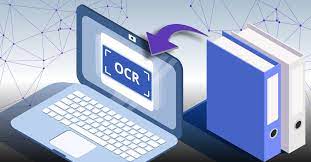Professional Document Capture – Smart And Efficient OCR Services
Businesses strive to discover cutting-edge solutions to challenges in order to streamline operations, increase reading quality, and reduce operating time. Data collection, organization, and processing are all time-consuming tasks. Deep learning, on the other hand, has enabled better and more complete solutions to this problem.
In today’s digitization environment, when practically all companies are automating their processes, OCR services are introducing the paperless method of extracting data from photos. When evaluating and retrieving data from tangible documents, operations are completed in a couple of seconds. Consumers of the internet and modern technology can now get what they want thanks to Smart and Real-Time OCR solutions.
The Significance of OCR Software
An OCR extracts text from photographs and converts it to a digital representation. Handwritten writing, printed text, infographics, identity verification papers, and other visuals can be used. For the purpose of extracting document data, an OCR reader must have both text detection and text recognition capabilities. To begin with, the textual portion of the picture is identified and examined. This localization is required for the second step of OCR scanning, which extracts text from images.
Read More: Face recognition system
Digitizing Data Entry Using OCR Services
Prior to the development of OCR services, manually retyping text was the only option for digitizing printed paper documents. This took a long time, was imprecise, and was primarily typed incorrectly. Data extraction from pictures and documents has become much more sophisticated by using OCR services. Companies that incorporate AI create powerful algorithms to extract text from photos and then interpret and combine them in a comprehensible and meaningful format.
Popular use cases
The most widespread use case offered by OCR services is the digital replication of text in printed documents. Prior to the availability of this technology, these processes were not only time-consuming but also resulted in inaccuracies and typing errors.
OCR services are commonly employed as secret technology that underpins many popular systems and services that we use every day. Less well-known but nonetheless noteworthy OCR scanning includes:
- Passports and other identity documents are scanned at the airport.
- Recognizing traffic signs and road cautions.
- Fetching all the credentials from visiting cards.
- Transforming handwritten notes into printed documents.
- Making the documents searchable on search engines in the form of pdf, etc.
- Data entry for several corporate documents like receipts, bills, invoices, etc.
- Identity document verification is nearly 99% accurate.
- Any company’s accounts department.
- Invoice processing companies and courier companies use it to generate automated invoices for products.
Technical Operations
After scanning, the OCR services produce the most accurate data. It makes no difference whether language or typeface is used. Everything is recognized by the OCR reader. Custom-built OCRs are also utilized. However, their capabilities are restricted. The global real-time OCR services, on the other hand, can read all sentence patterns and writing styles.
All the technical operations are performed under legal parameters through strong algorithms of OCR services,
- Compositing
To improve the quality of the readable text, the OCR services improve the picture quality by themselves.
- De-skew
If the preset alignment of any image does not work for the system, it will be amended accordingly for easy readability and then further processed.
- Despeckle Tool
The despeckle tool actually erases off all the stains or spots on the image to make it clean.
- Binarization Process
Through this process, the image is converted into a binary format that a computer can understand.
- Line Removal
Unnecessary shapes and lines are removed in case they are not required.
- Layout scanning
This OCR reader module divides the document into columns, paragraphs, captions, etc. The columnar, paragraph, and other formatting elements of this OCR reader module are used to organize the text.
- Identifiers for words and lines
At this particular stage, it is defined how the sentences will be structured.
- Character Segmentation
After being broken down into artifact-based parts, the characters are assembled.
- Normalization
It uses a good aspect ratio and, as part of the normalization process, scales the format to the margins.
Conclusion
OCR services may assist in delivering scalable benefits to a variety of sectors in terms of editability, accessibility, and backup maintenance. While industrial usage is being evaluated, they do have a lot of paperwork. Organizations can make documents more easily accessible for scrutiny by incorporating OCR services and digitizing them. The scanner is the initial stage in the transformation of analog recordings.











